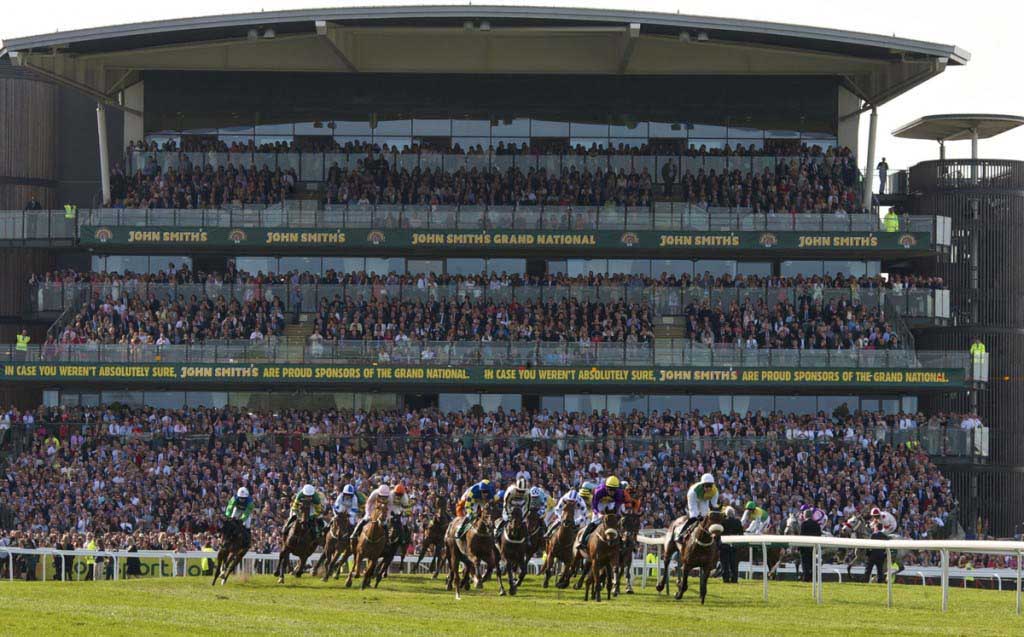
NEVER been to Aintree? You can bet you’re missing out, says MIKE NEVIN.
ORGANISED horse racing in the UK predates professional football by more than 100 years and the Grand National – first run officially at Aintree in 1839 and won by an aptly-named beast called Lottery – is the most world renowned race on the calendar.
It seems odd that the City of Liverpool, without the open green spaces and embedded traditions of jump racing’s Cheltenham and flat racing’s Newmarket, should host the nation’s favourite race.
Historically, this debt is owed to the proprietor of the Waterloo Hotel in Liverpool who leased land from the 2nd Earl of Sefton for early renewals of the event, initially at nearby Maghull and later, Aintree.
The modern three-day meeting (technically based in Sefton, on the outskirts of the Liverpool city boundaries) has, through the benefit of consistent sponsorship, grown in strength over the past two decades after financial uncertainties had clouded its future in the late 1970s.
Culminating in the Grand National on the Saturday, the festival has become a highlight of the Merseyside sporting and social portfolio.
Perhaps Liverpool’s interest in horse racing, the sport most inextricably linked to gambling in this country, has its roots in the Irish influence that is imbued in the city’s population.
If Ireland is the spiritual home of horse racing, and Liverpool is the honorary capital of Ireland, there is a de facto connection, but aside from an inordinate number of jockeys hailing from Liverpool, no obvious link exists. Except of course for local footballers – I give you Emlyn Hughes and Michael Owen from different eras – developing an interest through the sometimes murky world of betting.
A conceivably apocryphal story tells of former Liverpool manager Bob Paisley delaying his FA Cup semi-final team-talk until he’d heard how his Grand National selections had fared.
Aintree, normally staged three weeks after the Cheltenham Festival, which hosts the sport’s blue riband steeplechase The Gold Cup, comprises three distinct days that attract a fascinating mix of once-a-year local racegoers and racing disciples from all over the country.
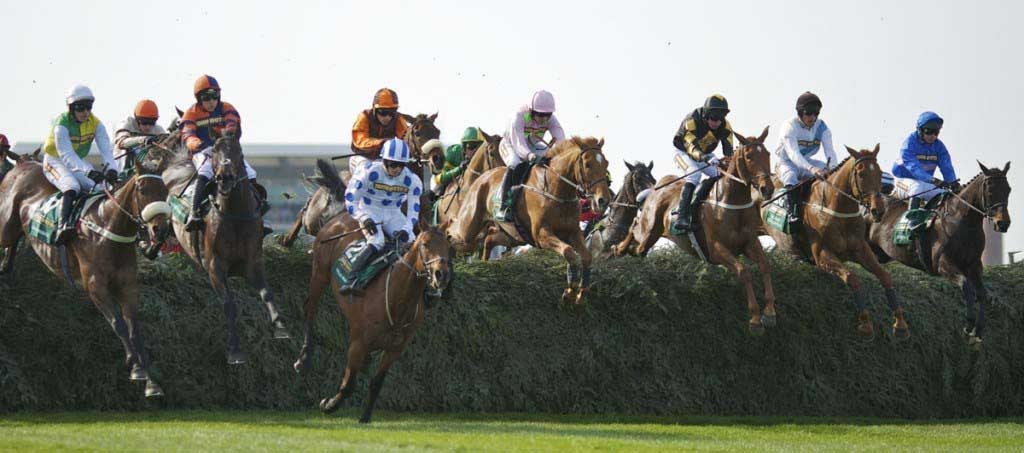
The centrepiece is The National itself on the final day, which pulls in an all-ticket crowd in excess of 70,000, but through superb marketing, the Thursdays (average attendance, 30,000) and Fridays (60,000+) of the meeting have become distinct occasions in their own right.
I first went to Aintree, dragged along by a betting-obsessed uncle, in 1981 on the Friday and vividly recall the excited chat among men clasping copies of the industry newspaper The Sporting Life, debating the outcome of the feature race of the day, the Aintree Hurdle.
I was struck by the ramshackle nature of the old County Stands – a mix of rotten wood, tired concrete and misty glass harking back to racing days of yore. The smell of beer and smoke hanging in the air and the decrepit facilities reminded me of going to the match, albeit with an entirely different audience.
The modern Aintree, by contrast, houses the shiny new Princess Royal and Queen Mother, Earl of Derby and Lord Sefton structures which take the strain of bulging crowds. Even the Aintree Pavilion, a tented refuge for those in the cheaper Tattersalls section offers a decent atmosphere and view of the action via big screens and in recent years, a post-racing pop concert/piss-up.
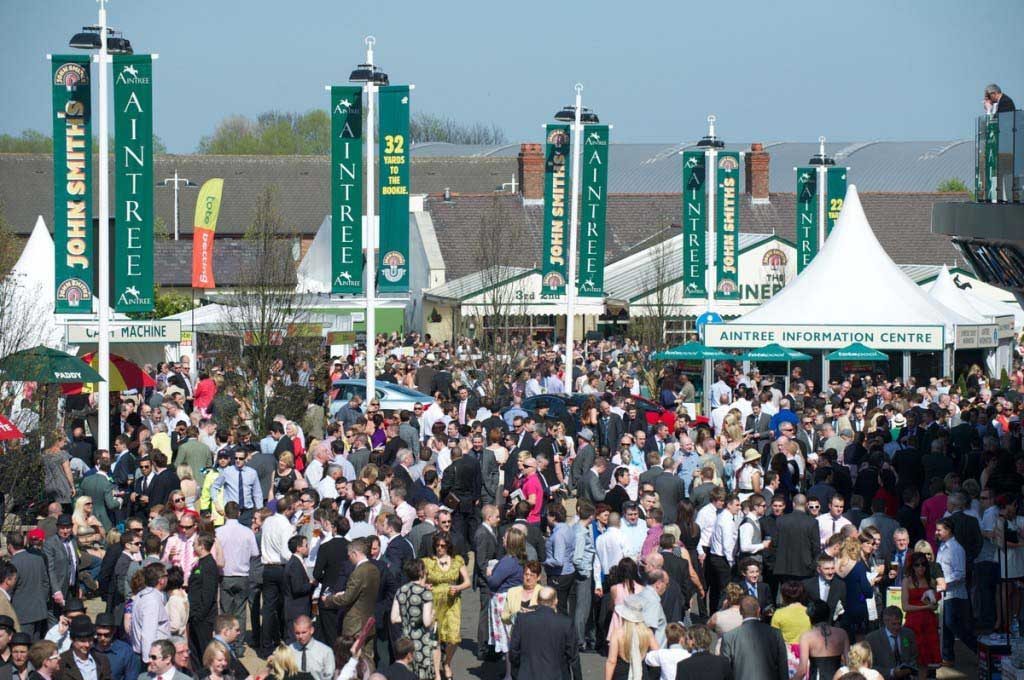
I must have been sufficiently enamoured with my first visit to Aintree, so much so that in the years that followed I became a regular, although in the early days this was confined to walking the course the night before the big race to inspect the daunting gorse fences – the Chair, Becher’s Brook, The Canal Turn and Valentines Brook.
I saw my first Grand National, won by Maori Venture, in 1987 on a day notable for the awful April weather – howling winds and icy rain, which made a right mess of my girlfriend’s elegant white trouser suit. Mind you, I wasn’t done with using the National as a means to impress a girl. There’s something about the whole experience that appeals to women; as befits the creation of Friday’s Ladies’ Day on which I’ll expand in due course.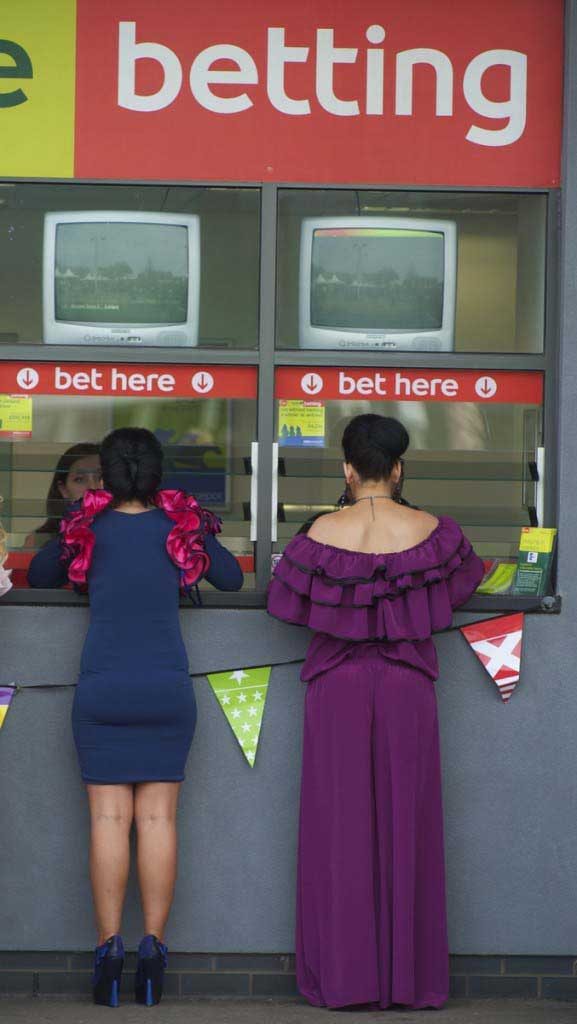
For people of my generation, growing up in the seventies, there is one name synonymous with the Grand National – Red Rum; three-time winner (and dual runner-up) between 1973 and 1977. Again, challenging the perception that racing is dominated by the country set, this gallant equine specimen was prepared locally; well, in Southport actually, regularly galloping on the soothing sands there as part of his training routine.
His trainer Donald McCain was the definition of a character in a sport that breeds eccentric. Old Ginger could barely be trusted by TV journalists for fear that he’d sprinkle his interview liberally with the words, “Christ”, “Bugger” and “Bloody” – not necessarily in that order. If his face was red, his tipple, among many, might have been rum.
The coverage of the National day on the BBC was always a highlight; akin to the build up afforded to cup finals of the era with the gradual build up of tension delivered by consummate broadcast professionals, Frank Bough, David Coleman and later, Des Lynam and Clare Balding, stationed in the old winners’ enclosure ready to greet the day’s heroes and heroines.
For a while, there always seemed to be a story around the National winner, from Red Rum’s perennial heroics to the tale of cancer survivor Bob Champion, who steered the crocked Aldaniti to glory in 1981. Nowadays, the “story” is that I never back the winner, and a fancied contender from the Emerald Isle normally prevails, despite carrying half of the Irish debt on its back.
The modern race, with modified, less daunting fences, more stringent entry qualifications, and presence of better quality horses isn’t a complete lottery, although last year’s winner, Auroras Encore was returned at 66-1, with the 2009 victor, the Irish-trained Mon Mome sluicing home at 100-1. Back in 1967, Foinavon, another rank outsider at 100-1 won by a distance after more than half the field was caught in melee at the 23rd of the notorious 30 Aintree obstacles.
Such is the potential for an upset; everyone has a bet on the “Nash”, ranging from the small each-way bets put on by mums and dads for their kids, to serious punters’ wagers inspired by valued whispers of inside information or studying months of form over the winter.
Keen followers of the sport will accept that pinpointing the winner of a race with 40 horses careering towards 30 six-foot hedges over four miles is pretty difficult. However, and I’ll guarantee every Scouser who’s ever shown the remotest interest will concur that after the race their Nan will declare she had the “first, third and fourth” with a total return of about eight quid for an outlay of a fiver. She probably backed half the field.
For me, the early 90s saw some cracking lads’ days out at Aintree; sometimes we’d do all three days and spend a fortune on ale, mopped up with the obligatory hog-roast butty, and amid the occasional winner shouted home from the bar, happily squandering a small fortune on fancies that would invariably end up on their ample arse or trail home in “mid-division” without barely a mention from the course commentator.
The moral of the betting story is that you wager only what you can afford to lose, otherwise a day at Aintree, where the vagaries of the form carried over from the preceding Cheltenham Festival isn’t always the best guide, can become a thoroughly miserable experience.
It can be a severe test of friendship too – best illustrated for me when a fancy of mine some years back, Arctic Call, fell at the last fence when eight lengths clear to the glee and guffaws of my supposed gambling comrades. Bastards.
The thing that contrasts Aintree with going to the match is an understanding that, in a nutshell, you can’t tell what the fuck is going on half the time. A course that stretches as far as two miles from the stands means that recourse to the action on the big screens – or the tellys in the many bars – is the best way to follow the action; looking a tit with a pair binoculars pointed the wrong way round notwithstanding.
As the unreliable equine contestants near the finish, you might get a glimpse of your horse getting “touched off” in a photo finish but that’s about as good as it gets – unless you’ve shelled out megabucks for a birds-eye spec at the top of one of the grandstands or, emboldened by drink, chanced your arm at the bunk into one of the executive boxes.
Around the course though, it’s a different story. You get closer to the horses and jockeys, viewed from just metres away in the Parade Ring, than you’ll ever get to a Premier League performer at Anfield, and milling around the owners and trainers area affords abundant opportunity to launch into a drunken tirade at a bullish trainer whose injudicious pre-race information has just lightened your wallet.
To this day, I baulk at backing the charges of the eminent trainer; a chastened Nicky Henderson, who ever so politely, once told me to “Fack Orrff” on his way back to the unsaddling enclosure. By the same token, if you’re lucky enough to back a winner, a drink can often be shared with winning connections once the victorious horse is back in its box. Double whiskeys all round.
In 1995, I took my girlfriend of the time, the current Mrs Nevin, to the National on one of our first ever dates. We never backed a winner between us but we had a cracking time. We’ve only missed one National together since, which makes me a natural candidate to assume the role of the late Reg Green, the locally-famed Aintree historian and superb author.
Apart from the fact that I can hardly remember the name of a winner between 1990 and 2013, I’m the perfect candidate. So, Reg, if you’re up there; read this and weep, lad.
Incidentally, the one year we missed the big race was 2012 when on the same day, Liverpool were playing Everton at Wembley in the FA Cup semi-final. Fittingly, Andy Carroll, our very own carthorse – all pony tail and galloping stride – got the winner for the Reds and I renewed the old pleasure of watching the Aintree cavalry charge on the telly.
One year that does stick in the mind though is 1997 when a bomb scare saw the course evacuated after the second race, causing the cancellation of The National. I was scouring for best odds in the “jungle” (betting ring) when officials started clearing the stands, which meant separation from the missus who was still necking wine up in the stands.
Later, given that these were the last of the pre-mobile phone years, we somehow bumped into each other walking away from the course down the famous Melling Road, so all was well. The whole exit panorama was an unusually comical sight as a crowd in various states of disrepair made their way into town accompanied by trainers in trilby hats, jockeys in full silks; whips in hand, and Aintree chefs who had been rudely interrupted preparing boeuf en croute for the upper class twits of the year.
However, in the true defiant spirit of “wacker”, a cracking evening ensued, with communal dancing til dawn at the Adelphi Hotel the abiding memory. The race was re-run on the following Monday evening; a little piece of National history.
All this brings me back to the Aintree Festival as it is today, and what to expect if you fancy toddling along to L10.
The opening day, Grand Opening Day as it’s been rebranded this year is for the local enthusiast; the Scouse fellers who pack out William Hill and Ladbrokes every day and enjoy shouting at tellys, or the younger lads suffering phone OCD tapping out bets on their multitude of iPhone apps.
The racing is good and the reappearance of the Cheltenham hopefuls who stretched the March overdrafts prospect the emptying of those smug bookies’ satchels. Of course, it seldom turns out that way and the Thursday highlight is copious amounts of John Smith’s bitter and a bit of stage diving at the after-racing concert – especially if the attractive girl group The Saturdays make an ill-judged attempt to perform in front of a predominantly male racing crowd from Liverpool.
* Late edit for you here you, pop pickers; Tea Street Band are playing at the races on Grand National Saturday. The prospect of Timo and Albo, melting into elements of the more rural racing crowd later, is a charming one. Anything could happen.
The social mix is a charming one of West Country folk (and their identical offspring as well) dressed from head to toe in Harris tweed and quilted Barbours blending in among the snorkel parkas and shiny Top Man and Matalan suits of the locals.
While it’s easy for us to make fun of these funny-looking country types with their ruddy complexions invading our Scouse hinterland for the weekend, consider this. These folk are the lifelong “season ticket holders” of racing – the committed weekly, diehards. To them, maybe, we’re passionless; the day-trippers we so abhor and stare out at the match.
These lads and lasses with their hip flasks, shooting sticks, deer stalkers and warm apparel are probably thinking : “Look at these fucking wools in their Scouse wedding and funeral clobber; the bad dickheads.” Touché.
The second day, Friday’s Ladies Day is one of the great social phenomena of the last decade. This is the day that the great womenfolk of Merseyside really go to town, in more ways than one. If the weather’s nice, and even if it isn’t, there is no grander sight than Liverpool’s gorgeous girls tottering into Aintree on stilt-like heels in an explosion of female fashion and colour. The spring air reeks of wine and perfume, as the City braces itself for mayhem.
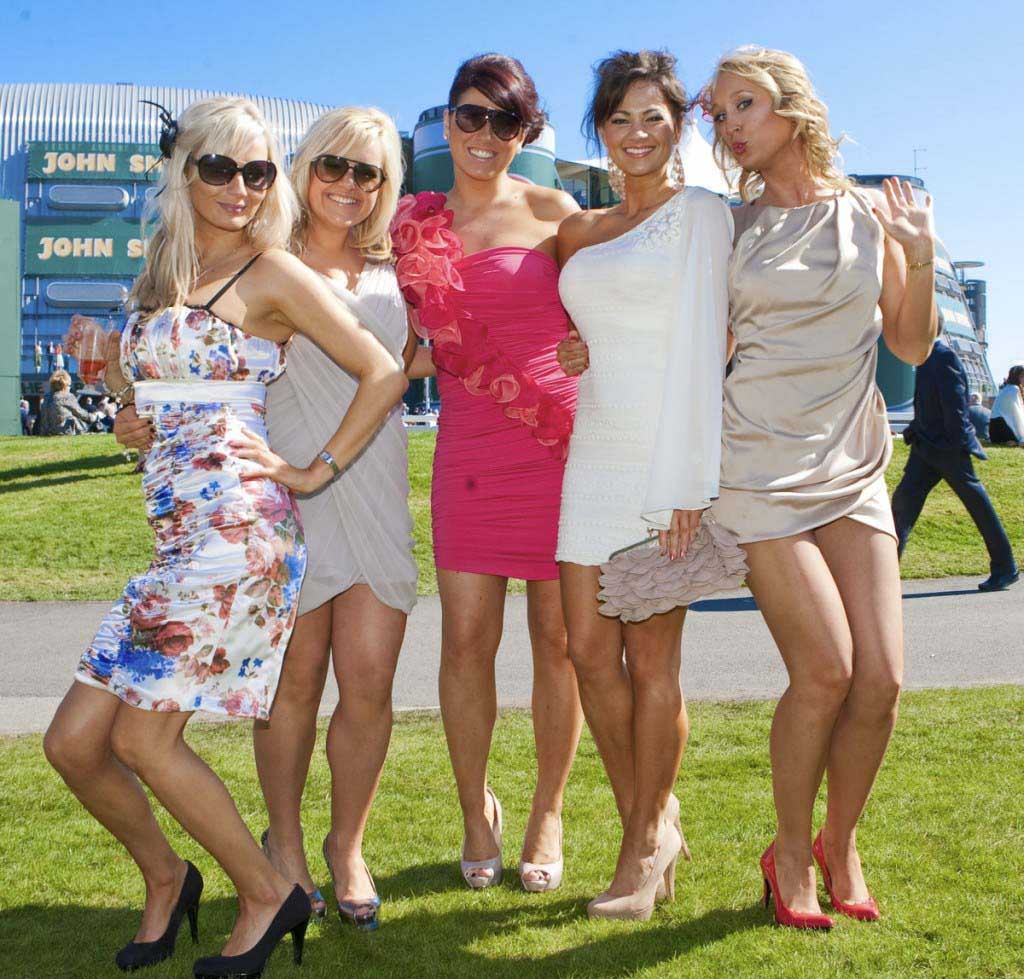
Strangely, there’s snobbishness, even from some of our own, who mock at the beguiling innocence of hundreds of decent local girls planning outfits, champagne breakfasts and a bloody good day out with their mates for months in advance.
Who cares if they’re half pissed by the time of the first race? And, if there are a few fatties squeezing into dresses that Kate Moss would struggle to carry off, there are some seriously pretty girls on show, even if the heels are soon discarded for flip flops for the trudge into town after the racing.
As the evening descends into carnage, the Irish bar collapses under the weight of Guinness and unsuspecting married men are taken hostage, sacrificed, and left for dead smeared in fake tan, while the City parties into the night. Boss.
For most young fellas, whether captured by a false eye-lashed Miss World candidate from the Dingle or not, it’s a long day and stimulants might be required in some quarters. Toilet cubicles are at a premium all afternoon, and it has little to do with Aintree’s strain on the bowels.
It’s a mad, noisy few hours. OK, there are monumental queues at the bars, the racing becomes a bit of a sideshow, and the birds annoyingly back all kinds of winners sharing tenuous links with the name of “our Cathy’s cat”, but if you struggle to take something from the aesthetics and atmosphere of this grand day out, you’re failing at life.
And if sneering at people enjoying themselves – a day away from the drudgery of Tory Britain – is your thing, console yourself with this; a copy of Saturday’s Daily Mail, with its annual assault on normal Liverpool girls; caning our citizens having a day off, will affirm all of your miserable prejudice.
Best of all though, and I highly recommend you see it for yourself, is that once Saturday morning’s hangover subsides, Grand National Day is still to come. Another day of the same colour, glamour, madness, raw enjoyment and a clash of UK cultures that pervade the three-day phenomenon that is Aintree, only this time with the world’s most famous race thrown in.
And all of this, on our Mersey doorstep. See you there. I might even tip you the winner, but if not, we can definitely have a drink.
Pics: Propaganda-Photo

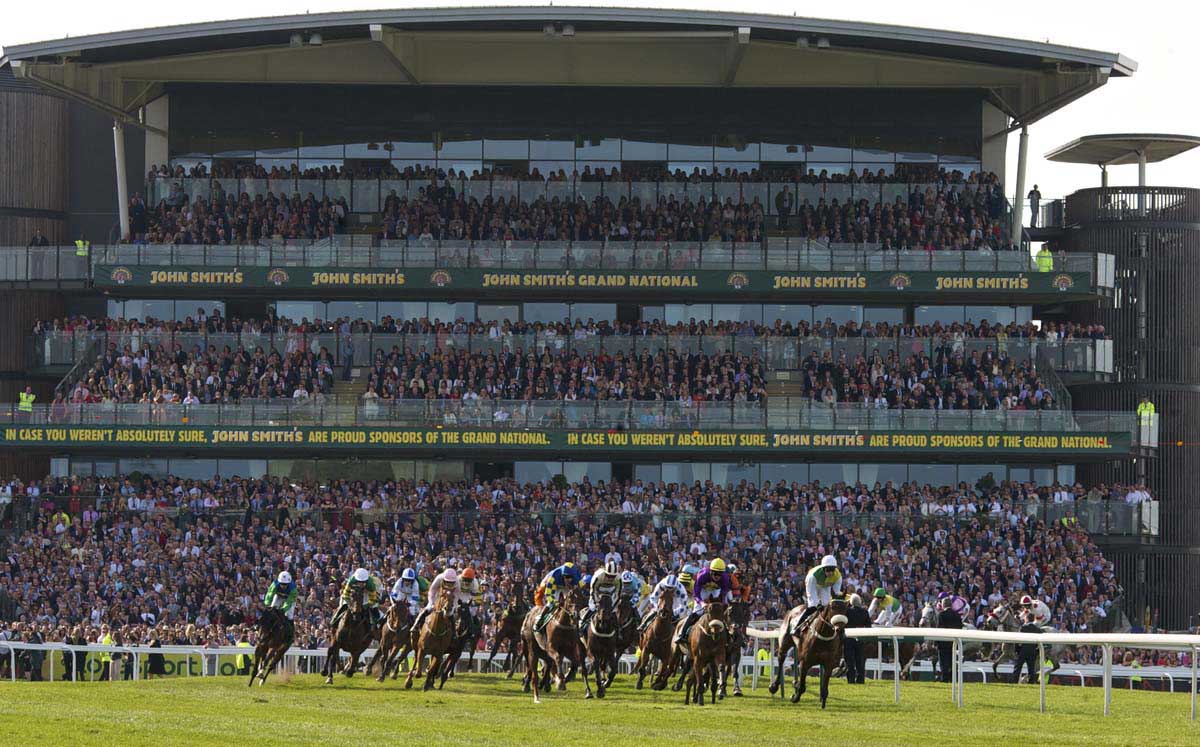










Liverpool has never been classed as “honorary Capital of Ireland”, by us Irish…what a terrible line.
No wonder Liverpool is up there with Boston and New York as cities to avoid on Paddys Day.
The rest of the article is good…Aintree has the best atmosphere of any racecourse in UK and Ireland.
I’ve been living in Australia for 10 years now. This article more than any I can recall brings home what I love and miss about home. Friday’s at Aintree were, as you described, utter carnage.